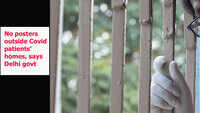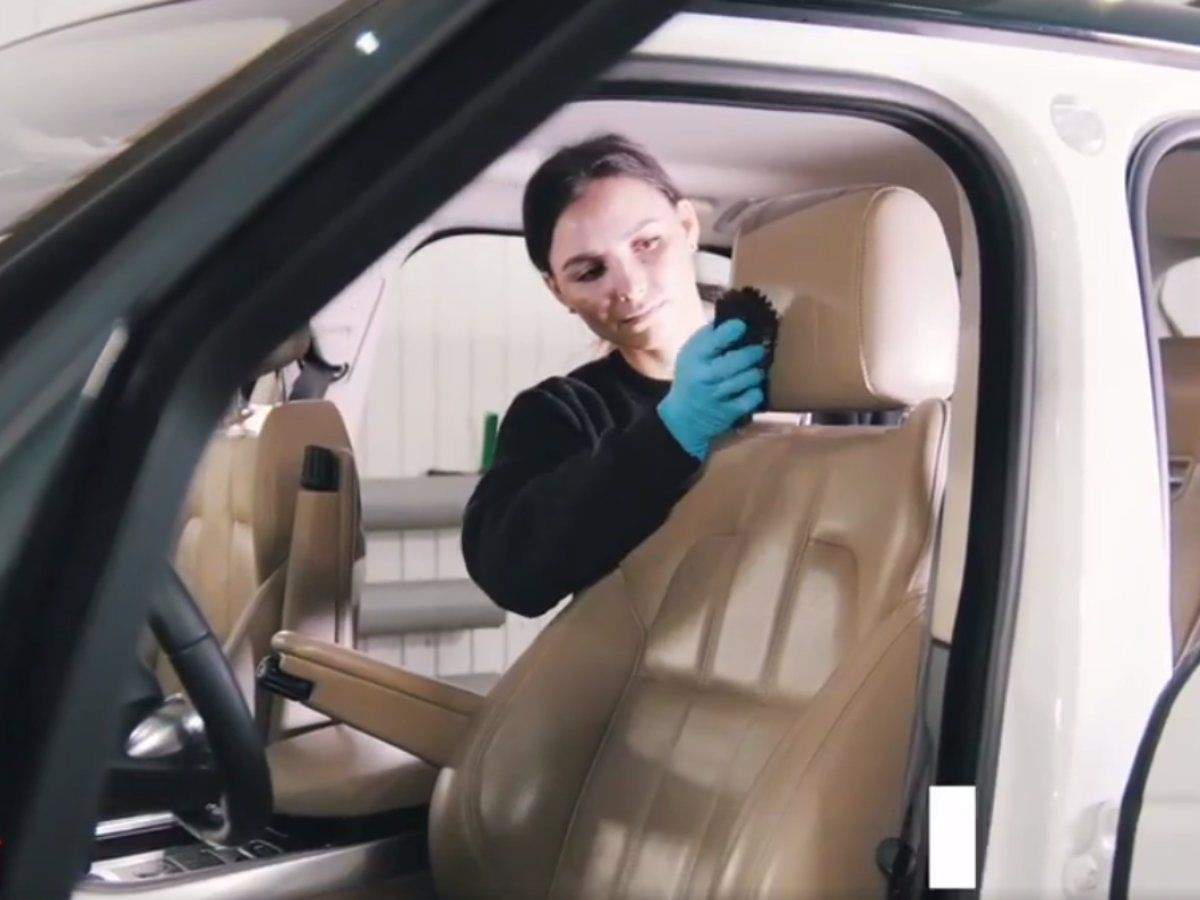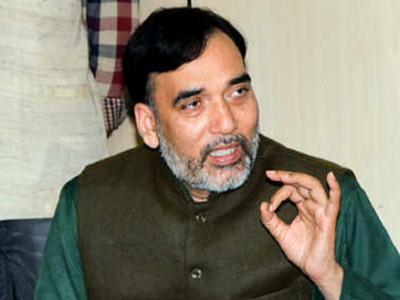
NEW DELHI: The AAP government is taking the lead in fight against air pollution in Delhi-NCR, but the neighbouring states are still "not serious" about the issue despite it becoming "more dangerous" due to the COVID-19 pandemic, Delhi environment minister Gopal Rai has said.
Track the pollution level in your city
He said the AAP government wants cooperation not confrontation with other states on the issue of air pollution. “The land has been divided into states but the sky is one.”
He said the “Pusa bio-decomposer” initiative as a solution to stubble burning will benefit Haryana and Punjab more, and Delhi's benefit is that it will get rid of the smoke from farm fires that make the city a gas chamber every year.
Action plan to curb pollution to come in force from Oct 15 in Delhi, adjoining areas
Stubble burning has started in Haryana and Punjab, which contributes significantly to the rise in pollution levels in Delhi and the National Capital Region.
In view of air quality in Delhi-NCR hitting poor level, a Supreme Court-mandated body Thursday announced implementation of graded response action plan (GRAP) from October 15 and a ban on the use of diesel generators, except for essential and emergency services in Delhi and the neighbouring cities of Ghaziabad, Noida, Greater Noida, Faridabad and Gurugram.
CPCB writes to Delhi govt for urgent action on major polluting sources, lists pending tasks
“We are the only government which is serious about it (pollution level). We are working on a mission mode. Many states in India have been battling severe air pollution, but they don't seem very active despite it being a major challenge, especially in the times of coronavirus,” Rai told PTI in an interview on Thursday.
“We are very concerned about our 13 hotpots and working hard to reduce pollution levels there, but other states have hotspots as well. They have not been making enough efforts,” the minister said.
Rai said the Delhi government has been taking action against dust, biomass burning, stubble and vehicular pollution.
“We have been doing all that we can, but we become helpless when pollution from other regions affects Delhi's airshed.
“The land has been divided into states but the sky is one. Our geographic location is such that pollutants from all directions converge here,” he said.
But air pollution in Delhi hit “severe” levels only when stubble burning is at its peak. The city becomes a gas chamber then, the minister asserted.
The crop residue burning has not stopped despite the Supreme Court issuing strict directions in this regard, Rai said.
“The issue concerns Punjab and Haryana, but Delhi is working more on it. Stubble burning is minimal in Delhi, still we are taking steps to deal with it,” he said.
“We are working with Indian Agricultural Research Institute, Pusa… took an initiative. We want to take the lead and set an example for other states.
“What we are working on will benefit Punjab and Haryana more. Delhi's benefit is that it will get rid of smoke from farm fires,” he said.
The environment minister said Delhi “wants cooperation (of other states) and not confrontation” on the issue of pollution.
Rai also questioned why the Centre was not taking any action against the 11 coal-fired power plants within 300 kilometers of Delhi, which have missed two deadlines to meet new emission norms.
“We had two thermal power plants and we shut them. Why have these 11 power plants not been able to reduce emissions? What's the reason? Why action is not being taken against the brick kilns operating in nearby areas using outdated technologies,” he said.
There are more than 1,640 such brick kilns in Uttar Pradesh, 161 in Haryana and 164 Rajasthan within 300 kilometers of Delhi.
“Action can be taken overnight when governments are willing to do anything. I mean to say they are not serious about this issue,” the minister said.
On the issue of smog towers, he said, “There is no fixed solution to the air pollution problem. One needs to take whatever options are available. Two smog towers are being set up (in Connaught Place and Anand Vihar). We will analyse the results and then a decision (for more towers in the future).”
Earlier this week, Delhi Chief Minister Arvind Kejriwal launched a mega anti-air pollution campaign -- “Yuddh Pradushan ke Viruddh”.
As part of it, Rai inaugurated a 'green war room' at the Delhi Secretariat Thursday to monitor steps being taken to bring down pollution levels in the city this winter.
The minister said a 10-member team has been set up under senior scientists Mohan George and B L Chawla to monitor the levels of primary pollutants, measures taken to curb pollution and status of complaints received through Green Delhi mobile application.
Satellite data related to farm fires in the neighbouring states will also be analysed in the green war room.
The SC-mandated Environment Pollution (Prevention and Control) Authority Thursday said told the governments of Delhi, Haryana, Uttar Pradesh and Rajasthan to "try and avert" the need to take emergency measures, such as a ban on construction and industries using fuels other than piped natural gas, as the economy is already under stress post-lockdown.
Delhi's air quality had turned poor Wednesday, the first time since June 29, with the Central Pollution Control Board recording a 24-hour average air quality index of 215.
An AQI between 0 and 50 is considered 'good', 51 and 100 'satisfactory', 101 and 200 'moderate', 201 and 300 'poor', 301 and 400 'very poor', and 401 and 500 'severe'.
Air pollution in Delhi is a year-round problem, majorly attributed to unfavourable met conditions, farm fires in neighbouring regions, local sources of pollution, and low temperatures during winters and stagnant winds.
Track the pollution level in your city
He said the AAP government wants cooperation not confrontation with other states on the issue of air pollution. “The land has been divided into states but the sky is one.”
He said the “Pusa bio-decomposer” initiative as a solution to stubble burning will benefit Haryana and Punjab more, and Delhi's benefit is that it will get rid of the smoke from farm fires that make the city a gas chamber every year.
Action plan to curb pollution to come in force from Oct 15 in Delhi, adjoining areas
Stubble burning has started in Haryana and Punjab, which contributes significantly to the rise in pollution levels in Delhi and the National Capital Region.
In view of air quality in Delhi-NCR hitting poor level, a Supreme Court-mandated body Thursday announced implementation of graded response action plan (GRAP) from October 15 and a ban on the use of diesel generators, except for essential and emergency services in Delhi and the neighbouring cities of Ghaziabad, Noida, Greater Noida, Faridabad and Gurugram.
CPCB writes to Delhi govt for urgent action on major polluting sources, lists pending tasks
“We are the only government which is serious about it (pollution level). We are working on a mission mode. Many states in India have been battling severe air pollution, but they don't seem very active despite it being a major challenge, especially in the times of coronavirus,” Rai told PTI in an interview on Thursday.
“We are very concerned about our 13 hotpots and working hard to reduce pollution levels there, but other states have hotspots as well. They have not been making enough efforts,” the minister said.
Rai said the Delhi government has been taking action against dust, biomass burning, stubble and vehicular pollution.
“We have been doing all that we can, but we become helpless when pollution from other regions affects Delhi's airshed.
“The land has been divided into states but the sky is one. Our geographic location is such that pollutants from all directions converge here,” he said.
But air pollution in Delhi hit “severe” levels only when stubble burning is at its peak. The city becomes a gas chamber then, the minister asserted.
The crop residue burning has not stopped despite the Supreme Court issuing strict directions in this regard, Rai said.
“The issue concerns Punjab and Haryana, but Delhi is working more on it. Stubble burning is minimal in Delhi, still we are taking steps to deal with it,” he said.
“We are working with Indian Agricultural Research Institute, Pusa… took an initiative. We want to take the lead and set an example for other states.
“What we are working on will benefit Punjab and Haryana more. Delhi's benefit is that it will get rid of smoke from farm fires,” he said.
The environment minister said Delhi “wants cooperation (of other states) and not confrontation” on the issue of pollution.
Rai also questioned why the Centre was not taking any action against the 11 coal-fired power plants within 300 kilometers of Delhi, which have missed two deadlines to meet new emission norms.
“We had two thermal power plants and we shut them. Why have these 11 power plants not been able to reduce emissions? What's the reason? Why action is not being taken against the brick kilns operating in nearby areas using outdated technologies,” he said.
There are more than 1,640 such brick kilns in Uttar Pradesh, 161 in Haryana and 164 Rajasthan within 300 kilometers of Delhi.
“Action can be taken overnight when governments are willing to do anything. I mean to say they are not serious about this issue,” the minister said.
On the issue of smog towers, he said, “There is no fixed solution to the air pollution problem. One needs to take whatever options are available. Two smog towers are being set up (in Connaught Place and Anand Vihar). We will analyse the results and then a decision (for more towers in the future).”
Earlier this week, Delhi Chief Minister Arvind Kejriwal launched a mega anti-air pollution campaign -- “Yuddh Pradushan ke Viruddh”.
As part of it, Rai inaugurated a 'green war room' at the Delhi Secretariat Thursday to monitor steps being taken to bring down pollution levels in the city this winter.
The minister said a 10-member team has been set up under senior scientists Mohan George and B L Chawla to monitor the levels of primary pollutants, measures taken to curb pollution and status of complaints received through Green Delhi mobile application.
Satellite data related to farm fires in the neighbouring states will also be analysed in the green war room.
The SC-mandated Environment Pollution (Prevention and Control) Authority Thursday said told the governments of Delhi, Haryana, Uttar Pradesh and Rajasthan to "try and avert" the need to take emergency measures, such as a ban on construction and industries using fuels other than piped natural gas, as the economy is already under stress post-lockdown.
Delhi's air quality had turned poor Wednesday, the first time since June 29, with the Central Pollution Control Board recording a 24-hour average air quality index of 215.
An AQI between 0 and 50 is considered 'good', 51 and 100 'satisfactory', 101 and 200 'moderate', 201 and 300 'poor', 301 and 400 'very poor', and 401 and 500 'severe'.
Air pollution in Delhi is a year-round problem, majorly attributed to unfavourable met conditions, farm fires in neighbouring regions, local sources of pollution, and low temperatures during winters and stagnant winds.

Coronavirus outbreak
Trending Topics
LATEST VIDEOS
City
 HAL employee arrested for supplying fighter jet information to Pakistan
HAL employee arrested for supplying fighter jet information to Pakistan 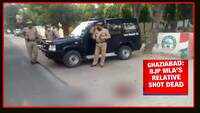 Shocking: BJP MLA's relative shot dead during morning walk in Ghaziabad
Shocking: BJP MLA's relative shot dead during morning walk in Ghaziabad 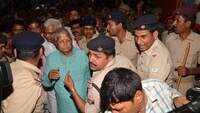 Fodder scam: Former Bihar CM Lalu Prasad Yadav gets bail in Chaibasa treasury case, to remain in jail
Fodder scam: Former Bihar CM Lalu Prasad Yadav gets bail in Chaibasa treasury case, to remain in jail 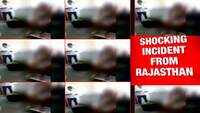 Shocking: 50-year-old temple priest set on fire in Rajasthan's Karauli
Shocking: 50-year-old temple priest set on fire in Rajasthan's Karauli
More from TOI
Navbharat Times
Featured Today in Travel
Get the app

